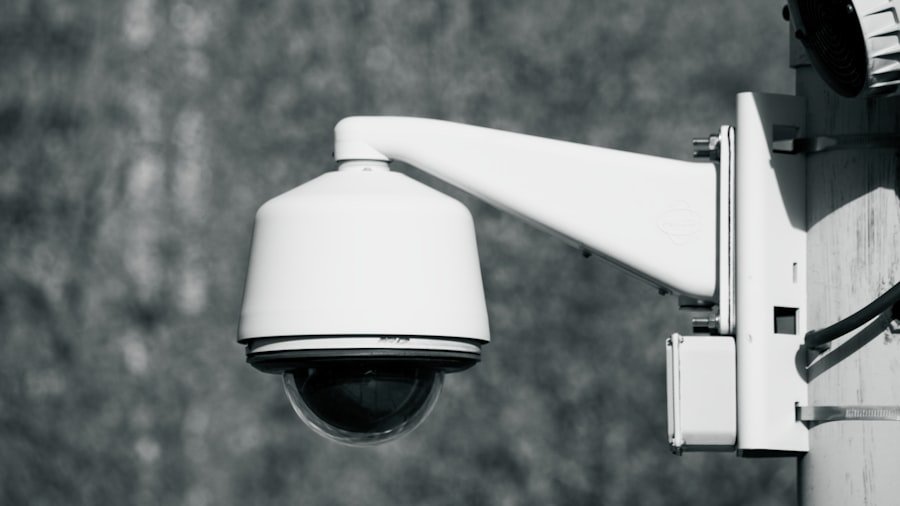Insider threats represent a significant and often underestimated risk within organisations. These threats arise from individuals who have legitimate access to an organisation’s resources, including employees, contractors, and business partners. Unlike external threats, which are typically characterised by malicious intent from outside the organisation, insider threats can stem from a variety of motivations, including financial gain, personal grievances, or even unintentional actions.
The complexity of insider threats lies in their dual nature; they can be both intentional and unintentional, making them particularly challenging to detect and mitigate. The rise of digital transformation has further complicated the landscape of insider threats. As organisations increasingly rely on technology and data sharing, the potential for misuse of access privileges grows.
Employees may inadvertently expose sensitive information through negligence or lack of awareness regarding security protocols. Conversely, disgruntled employees may exploit their access to sabotage systems or steal proprietary information. This duality necessitates a comprehensive understanding of the motivations behind insider threats and the various forms they can take, as well as the potential consequences for organisations that fail to address them effectively.
Summary
- Insider threats refer to the potential risk posed by individuals within an organisation who have access to sensitive information and may misuse it for personal gain or to harm the organisation.
- Types of insider threats include malicious insiders, negligent insiders, and compromised insiders, each posing different risks to an organisation’s security.
- Insider threats can have a significant impact on an organisation, including financial loss, damage to reputation, and compromised data security.
- Implementing insider threat management involves establishing policies, procedures, and technologies to detect, prevent, and respond to insider threats effectively.
- Best practices for insider threat management include conducting thorough background checks, implementing access controls, and promoting a culture of security awareness within the organisation.
Types of Insider Threats
Insider threats can be categorised into several distinct types, each with its own characteristics and implications for organisational security. One of the most common types is the malicious insider, an individual who intentionally seeks to harm the organisation. This could involve stealing sensitive data for personal gain, sabotaging systems, or leaking confidential information to competitors.
Malicious insiders often have a deep understanding of the organisation’s operations and vulnerabilities, making their actions particularly damaging. Another category is the negligent insider, who poses a threat not out of malice but due to carelessness or lack of awareness. This type of insider might inadvertently expose sensitive data by falling victim to phishing attacks or failing to follow established security protocols.
For instance, an employee might leave a sensitive document on their desk, allowing it to be seen by unauthorised individuals. The consequences of negligent insider threats can be just as severe as those posed by malicious insiders, as they can lead to data breaches and loss of intellectual property. A third type is the compromised insider, who has been manipulated or coerced into acting against the interests of their organisation.
This could occur through social engineering tactics or even direct threats to the individual’s safety or wellbeing. Compromised insiders may not initially intend to cause harm but find themselves in situations where they feel compelled to act against their employer’s interests. Understanding these various types of insider threats is crucial for organisations seeking to develop effective strategies for prevention and response.
The Impact of Insider Threats

The ramifications of insider threats can be profound and far-reaching. Financially, organisations may face significant losses due to data breaches, theft of intellectual property, or operational disruptions caused by malicious actions. According to a report by the Ponemon Institute, the average cost of an insider threat incident can reach into millions of pounds when considering factors such as legal fees, regulatory fines, and reputational damage.
The financial implications are compounded by the potential loss of customer trust and loyalty, which can take years to rebuild. Beyond financial losses, insider threats can also lead to operational inefficiencies and a decline in employee morale. When incidents occur, organisations often find themselves in crisis mode, diverting resources away from regular operations to address the fallout.
This can create a culture of fear and suspicion among employees, leading to decreased productivity and collaboration. Furthermore, if employees feel that their organisation is not adequately protecting sensitive information or responding effectively to threats, it can result in increased turnover rates as talent seeks more secure environments.
Implementing Insider Threat Management
To effectively combat insider threats, organisations must implement robust insider threat management programmes that encompass a range of strategies and tools. The first step in this process is conducting a thorough risk assessment to identify potential vulnerabilities within the organisation. This involves evaluating access controls, monitoring user behaviour, and understanding the specific risks associated with different roles within the company.
By identifying high-risk areas, organisations can tailor their security measures accordingly. Once vulnerabilities have been identified, organisations should establish clear policies and procedures for managing insider threats. This includes defining acceptable use policies for technology and data access, as well as outlining the consequences for violations.
Additionally, organisations should implement monitoring systems that track user activity and flag any suspicious behaviour for further investigation. These systems can provide valuable insights into potential insider threats before they escalate into more serious incidents.
Best Practices for Insider Threat Management
Adopting best practices for insider threat management is essential for creating a secure organisational environment. One key practice is fostering a culture of security awareness among employees. This involves regular training sessions that educate staff about the risks associated with insider threats and the importance of adhering to security protocols.
By empowering employees with knowledge, organisations can reduce the likelihood of negligent insider actions and encourage vigilance against potential threats. Another best practice is implementing a principle of least privilege (PoLP) when granting access to sensitive information and systems. By ensuring that employees only have access to the data necessary for their roles, organisations can minimise the potential impact of an insider threat.
Regular audits should also be conducted to review access permissions and ensure that they remain appropriate as roles change within the organisation. Additionally, organisations should establish clear communication channels for reporting suspicious behaviour or security concerns. Employees should feel comfortable raising alarms without fear of retribution.
Encouraging open dialogue about security issues can help create an environment where potential threats are identified early and addressed promptly.
Technologies for Insider Threat Management

The technological landscape offers a variety of tools designed specifically for managing insider threats effectively. User behaviour analytics (UBA) is one such technology that leverages machine learning algorithms to monitor user activity patterns and detect anomalies that may indicate malicious intent or negligence. By establishing baselines for normal behaviour, UBA systems can alert security teams when deviations occur, allowing for timely intervention.
Data loss prevention (DLP) solutions are another critical component in the fight against insider threats. DLP technologies monitor data transfers and usage across networks and endpoints, helping organisations prevent unauthorised access or sharing of sensitive information. These systems can enforce policies that restrict data movement based on user roles and behaviours, providing an additional layer of protection against both malicious and negligent insiders.
Moreover, endpoint detection and response (EDR) solutions play a vital role in identifying and mitigating insider threats at the device level. EDR tools continuously monitor endpoints for suspicious activities and provide real-time alerts to security teams when potential threats are detected. By integrating these technologies into an organisation’s security framework, businesses can enhance their ability to detect and respond to insider threats proactively.
Training and Education for Insider Threat Management
Training and education are fundamental components of an effective insider threat management strategy. Regular training sessions should be conducted to ensure that all employees understand the risks associated with insider threats and are familiar with the organisation’s security policies. These sessions should cover topics such as recognising phishing attempts, safeguarding sensitive information, and reporting suspicious activities.
In addition to formal training programmes, organisations should consider implementing ongoing awareness campaigns that reinforce security best practices throughout the year. This could include distributing newsletters with tips on maintaining cybersecurity hygiene or hosting workshops that simulate real-world scenarios involving insider threats. By keeping security at the forefront of employees’ minds, organisations can cultivate a culture of vigilance that helps mitigate risks associated with insider threats.
Furthermore, tailored training programmes should be developed for specific roles within the organisation that may have heightened access to sensitive information or critical systems. For example, IT personnel may require more in-depth training on recognising signs of compromised insiders or understanding advanced persistent threats (APTs). By providing role-specific education, organisations can ensure that all employees are equipped with the knowledge necessary to protect against insider threats effectively.
The Future of Insider Threat Management
As technology continues to evolve at a rapid pace, so too will the landscape of insider threat management. The increasing adoption of remote work arrangements has expanded the attack surface for potential insider threats, necessitating new approaches to security management. Organisations will need to invest in advanced technologies that provide comprehensive visibility across distributed environments while ensuring that employees remain engaged in maintaining security protocols.
Artificial intelligence (AI) and machine learning will play pivotal roles in shaping the future of insider threat management. These technologies will enable organisations to analyse vast amounts of data in real-time, identifying patterns and anomalies that may indicate potential threats more efficiently than traditional methods. As AI continues to advance, its ability to predict and prevent insider threats will become increasingly sophisticated.
Moreover, regulatory frameworks surrounding data protection are likely to evolve in response to growing concerns about insider threats. Organisations will need to stay abreast of these changes and adapt their policies accordingly to ensure compliance while safeguarding sensitive information from both internal and external risks. In conclusion, addressing insider threats requires a multifaceted approach that combines technology, training, policy development, and cultural awareness within organisations.
As the threat landscape continues to evolve, proactive measures will be essential in safeguarding organisational assets against both intentional and unintentional harm from insiders.
Insider threat management is crucial for businesses to protect their sensitive data and prevent security breaches. One related article that provides valuable insights into enhancing business communication and security is “Benefits of a Virtual Phone System in a Business”. This article discusses how virtual phone systems can improve communication efficiency and streamline operations, ultimately contributing to a more secure work environment. By implementing such technology, businesses can better manage insider threats and safeguard their valuable information.
